The James Webb Space Telescope (JWST) has been called the successor to the Hubble Space Telescope (HST). But what does this really mean? How will JWST be different than HST? There are some similarities - both telescopes are (or will be) in space. They both seek to improve our understanding of processes like star birth and the evolution of galaxies. However, there are many differences between HST and JWST.
For starters, JWST will primarily look at the Universe in the infrared, while HST studies it at optical and ultra-violet wavelengths. JWST also has a much bigger mirror than HST. This larger light collecting area means that JWST can peer farther back into time than HST is capable of doing. HST is in a very close orbit around the earth, while JWST will be 1.5 million kilometers (km) away at the second Lagrange (L2) point.
Read on to explore some of the details of what these differences mean.
Wavelength
JWST will observe primarily in the infrared and will have four science instruments that can take images and spectra of objects. These instruments will provide wavelength coverage from 0.6 to 28 micrometers (or "microns"; 1 micron is 1.0 x 10-6 meters). The infrared part of the electromagnetic spectrum goes from about 0.75 microns to a few hundred microns.. This means that JWST's instruments will work primarily in the infrared range of the electromagnetic spectrum, with some capability in the visible range.The instruments on HST can observe a small portion of the infrared spectrum from 0.8 to 2.5 microns, but its primary capabilities are in the ultra-violet and visible parts of the spectrum from 0.1 to 0.8 microns.
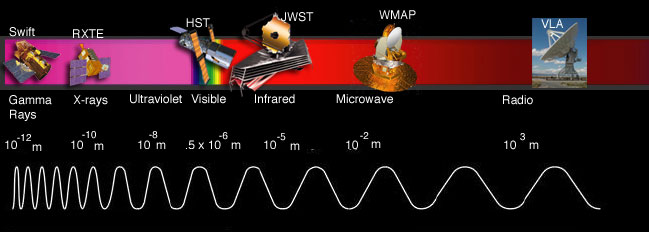
[top]
Size
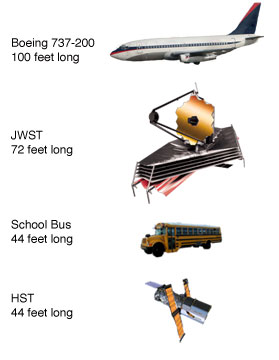 | HST is 13.2 meters (43.5 ft.) long and its maximum diameter is 4.2 meters (14 ft.) It is about the size of a large tractor-trailer truck. By contrast, JWST's sunshield is about 22 meters by 12 meters (72 ft x 39 ft). A Boeing 737-200 is 100 feet long! |
Orbit
The Earth is 150 million km from the Sun and the moon orbits the earth at a distance of approximately 384,500 km.

The Hubble Space Telescope orbits around the Earth at an altitude of ~570 km above it.
JWST will not actually orbit the Earth - instead it will sit at the L2 Lagrange point, 1.5 million km away! Because HST is in earth orbit, it was able to be launched into space by the space shuttle. JWST will be launched on an Ariane 5 rocket and because it won't be in earth orbit, it is not designed to be serviced by the space shuttle.

A Lagrange point is one of the five positions in interplanetary space where a small object (like a satellite) can be relatively stationary with respect to two larger objects (like the Earth and the Sun). It is analogous to an earth satellite in a geosynchronous orbit that allows it satellite to stay stationary over one spot on the Earth. At a Lagrange point, a satellite can stay "fixed" in space, rather than orbiting the Earth.
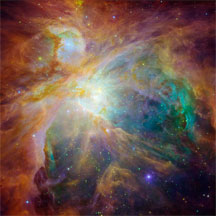
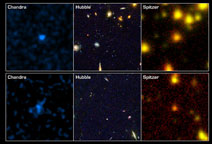
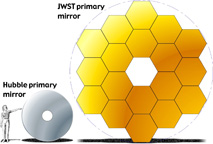
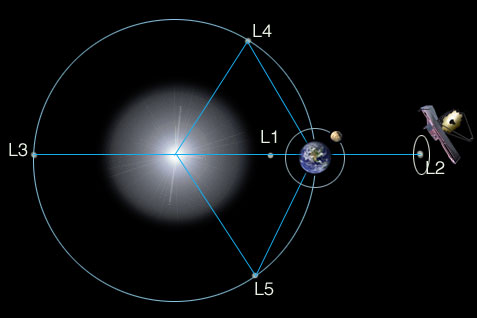



0 comments:
Post a Comment